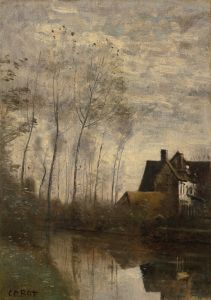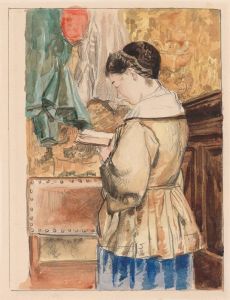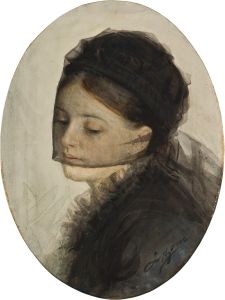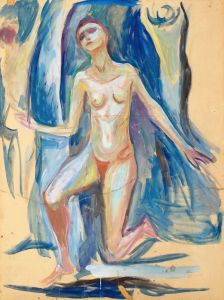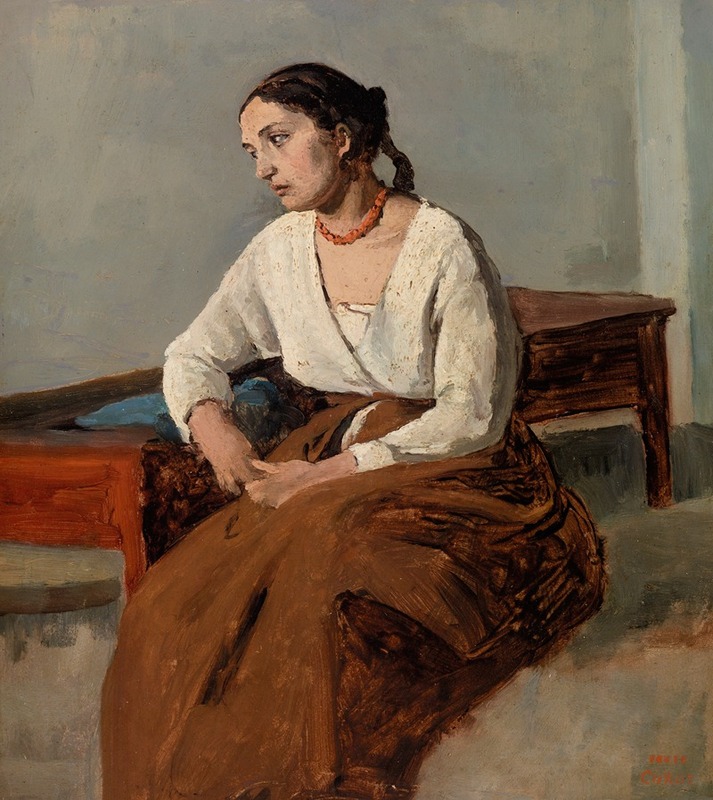
Melancholy Italian Woman
A hand-painted replica of Jean-Baptiste-Camille Corot’s masterpiece Melancholy Italian Woman, meticulously crafted by professional artists to capture the true essence of the original. Each piece is created with museum-quality canvas and rare mineral pigments, carefully painted by experienced artists with delicate brushstrokes and rich, layered colors to perfectly recreate the texture of the original artwork. Unlike machine-printed reproductions, this hand-painted version brings the painting to life, infused with the artist’s emotions and skill in every stroke. Whether for personal collection or home decoration, it instantly elevates the artistic atmosphere of any space.
Jean-Baptiste-Camille Corot, a pivotal figure in landscape painting and a precursor to the Impressionist movement, created "Melancholy Italian Woman" in the mid-19th century. Corot, born in Paris in 1796, was renowned for his ability to capture the subtle interplay of light and shadow, and his works often depicted serene landscapes and figures enveloped in a poetic atmosphere. While Corot is primarily celebrated for his landscapes, he also produced a number of figure paintings, of which "Melancholy Italian Woman" is a notable example.
"Melancholy Italian Woman" exemplifies Corot's interest in capturing the emotional depth and introspective nature of his subjects. The painting portrays a young Italian woman, seated and lost in thought, her expression conveying a sense of introspection and quiet contemplation. The composition is marked by Corot's characteristic use of soft, muted colors and delicate brushwork, which lend the painting a dreamlike quality. The background is typically understated, allowing the focus to remain on the figure and her expression.
Corot's approach to figure painting was influenced by his extensive travels in Italy, where he was inspired by the country's landscapes and people. This influence is evident in "Melancholy Italian Woman," where the subject's attire and demeanor reflect the Italian cultural context. Corot's Italian sojourns were crucial in shaping his artistic style, as he absorbed the classical traditions and the natural beauty of the Italian countryside, which he then integrated into his work.
The painting is also indicative of Corot's transition from the Neoclassical style, which emphasized idealized forms and clarity, to a more naturalistic and expressive approach. This shift is evident in the way Corot captures the nuanced emotions of his subject, moving beyond mere representation to evoke a deeper emotional resonance. His ability to convey mood and atmosphere through subtle tonal variations and a restrained palette is a hallmark of his mature style.
"Melancholy Italian Woman" is housed in the Louvre Museum in Paris, where it is part of a significant collection of Corot's works. The painting is appreciated not only for its aesthetic qualities but also for its insight into Corot's development as an artist who bridged the gap between traditional and modern approaches to painting. His influence on subsequent generations of artists, particularly the Impressionists, is well-documented, as they admired his ability to capture the transient effects of light and atmosphere.
Corot's legacy is reflected in his ability to blend the real with the ideal, creating works that resonate with a timeless beauty and emotional depth. "Melancholy Italian Woman" stands as a testament to his skill in portraying the human condition with sensitivity and grace, making it a cherished piece in the canon of 19th-century art.










